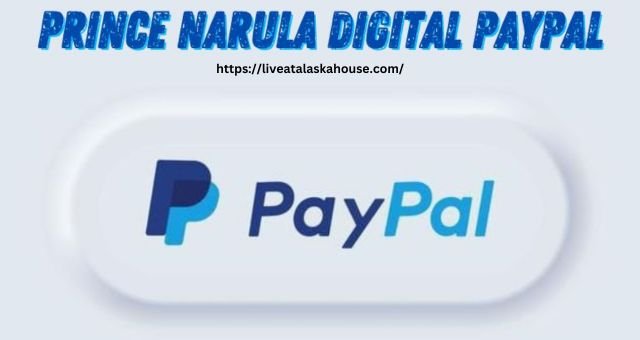Beste Forbrukslån Uten Sikkerhet: Best Loans Without Collateral

Business owners looking for financing without collateral have several options at their disposal, including unsecured loans and lines of credit, invoice financing and merchant cash advances.
Loans without collateral may be easier to qualify for than secured loans, but they often carry higher interest rates and shorter repayment terms. Furthermore, any default on such a loan could damage your credit rating and interfere with future borrowing or credit card applications.
1. Unsecured Business Loans
There are various forms of business loans without collateral that don’t need to be secured as security by you, your funding needs or how quickly your need for funds. When selecting the ideal option for your business, keep these considerations in mind: fees and interest rates tend to be higher due to more risk being taken by lenders when lending without security as repayment periods tend to be shorter and smaller loan amounts available may make qualifying more challenging – particularly if your company has poor credit.
To qualify for an unsecured business loan, your company must demonstrate both an excellent credit history and steady cash flow. Furthermore, certain minimum requirements must be met in order to show that payments can be afforded comfortably. These loans may be offered online lenders that specialize in helping startups or new businesses. In addition, traditional business lenders such as banks or the SBA also offer such loans.
Secured business loans differ significantly from their unsecured counterparts in that secured loans require you to pledge assets as collateral against your debt, such as real estate or inventory; should you default on this loan, they can take control of those assets to cover losses from their lender. In contrast, with unsecured loans you don’t need to place up personal assets as collateral but instead may need to provide personal guarantees or sign a Uniform Commercial Code lien against them in case something happens with theirs.
Unsecured business loans provide access to capital without risking personal assets, and are easier to qualify for than secured loans due to looser credit requirements. However, keep in mind that they typically come with higher fees and interest rates, making them more costly for companies with poor credit.
Unsecured business loans can be an ideal solution for startups and new businesses that are trying to establish or rebuild their credit histories. Unsecured business loans also make getting cash quickly when needed much simpler, while the predictable monthly payments make repayment easier to manage.
2. Lines of Credit
Instead of loans, lines of credit allow you to borrow only what is necessary when you need it. They’re an ideal way to cover unexpected home repair expenses or large purchases such as buying a computer. Banks assess eligibility based on income, credit scores and other criteria; when applying for a home equity line of credit (billigeforbrukslån.no – beste forbrukslån) or similar. However, banks look at your mortgage assets in order to decide the loan amount available to you.
Personal and HELOC lines of credit are unprotected loans, meaning you don’t offer up an asset as collateral against defaulting. This increases risk for lenders and can result in higher interest rates compared to secured lines. When applying, banks often perform hard inquiries on your credit reports to assess your creditworthiness – this may temporarily lower your scores by several points.
To be approved for a line of credit, typically you will be asked to present proof of identity, employment and income to a lender, such as bank statements or paycheck stubs. Your lender may set your credit limit and rate according to your individual creditworthiness – for instance it could provide either a personal line of credit without collateral or down payments, or provide home equity lines of credit as collateral-free loans.
No matter which form of credit you select, it’s essential that you only borrow what you can afford to repay and that payments are on time. Excessive borrowing can lead to debt, late fees and damage to your credit score if not managed responsibly.
To maintain low credit utilization levels and ensure payments never miss their deadlines, review your report regularly and consider automating payments when possible so as to never miss one again. If necessary, borrow just enough; interest accrues daily so try only borrowing when absolutely necessary; if unable pay full balance then contact the lender with a repayment plan offer.

3. Invoice Financing
As its name suggests, invoice financing allows businesses to obtain funds by collateralizing loans with unpaid customer invoices. A lender evaluates each invoice’s creditworthiness before providing a portion of its value as loan proceeds – providing quick access to cash without needing extra collateral or personal guarantees. Furthermore, loan proceeds typically have no restrictions imposed upon their use making this an excellent way for expanding and growing companies.
Invoice financing (also referred to as accounts receivable finance or invoice factoring) provides businesses with a practical solution for cash flow gaps caused by late payments from customers. Lenders evaluate an invoice’s characteristics and customer creditworthiness before providing an advance of up to 90% of total invoice amount owed, which businesses can use to cover operational costs, invest in growth initiatives or cover operational expenses more easily. Depending on their needs they can collect invoices directly or have financing companies chase down payments themselves on behalf of clients owing them.
B2B companies that invoice other businesses regularly but are struggling to meet their cash flow needs due to slow customer payment terms can benefit greatly from this form of lending. Furthermore, this financing option may also provide immediate cash and may qualify for other financing solutions based on criteria like industry or time in business.
However, invoice financing can be costly if your customers do not pay on time. Your business could incur late payment penalties while still having to repay your invoice financing provider plus fees, even if some or all of their invoice isn’t fully paid off by clients. This expense may present difficulty for small and mid-sized enterprises who cannot afford such added expenses.
4. Equipment Financing
For many businesses, having access to the latest machinery, technology, and equipment is crucial for maintaining competitiveness and efficiency. However, the upfront costs associated with purchasing or leasing equipment can be prohibitive. This is where Equipment Financing comes into play.
Equipment Financing allows businesses to acquire the equipment they need without the burden of significant upfront costs. Instead of paying the full purchase price upfront, businesses can spread the cost over time through regular installment payments. This not only conserves valuable capital but also ensures that businesses can stay up-to-date with the latest technology and equipment advancements.
One of the key advantages of Equipment Financing is its flexibility. Whether it’s manufacturing machinery, commercial vehicles, or IT infrastructure, businesses can finance a wide range of equipment tailored to their specific needs. Additionally, the equipment itself serves as collateral for the loan, minimizing the lender’s risk and potentially leading to more favorable terms and interest rates.
Inventory Financing: Optimizing Supply Chain Management and Seasonal Fluctuations
Maintaining adequate inventory levels is critical for businesses across various industries, but it can also be a significant drain on working capital. Inventory Financing offers a solution by providing businesses with the necessary capital to purchase, manage, and optimize their inventory levels.
With Inventory Financing (which you can learn about here), businesses can access funds based on the value of their existing inventory or projected future inventory needs. Whether it’s raw materials, finished goods, or perishable items, businesses can leverage their inventory as collateral to secure financing. This not only ensures a steady supply of inventory but also allows businesses to take advantage of bulk purchasing discounts and seasonal demand fluctuations.
One of the key benefits of Inventory Financing is its ability to align financing with inventory turnover cycles. By leveraging inventory as collateral, businesses can unlock the working capital needed to meet short-term cash flow needs or capitalize on growth opportunities. Additionally, Inventory Financing can be structured as a revolving line of credit, providing businesses with ongoing access to funds as needed.
5. Commercial Real Estate Loans
For businesses looking to expand, relocate, or invest in commercial properties, Commercial Real Estate Loans offer a pathway to realizing their real estate goals. Whether it’s purchasing an office building, retail space, or industrial warehouse, Commercial Real Estate Loans provide businesses with the necessary capital to acquire and develop commercial properties.
One of the primary advantages of Commercial Real Estate Loans is their long-term financing options. With loan terms ranging from 5 to 25 years or more, businesses can spread the cost of real estate acquisition over an extended period, making it more manageable and predictable. Additionally, commercial properties themselves often appreciate in value over time, providing businesses with potential long-term investment opportunities.
They also offer flexibility in terms of financing structures and repayment options. Whether it’s traditional mortgage loans, SBA-backed loans, or commercial construction loans, businesses can choose the option that best suits their financing needs and objectives. Additionally, Commercial Real Estate Loans can be used for various purposes, including property acquisition, refinancing existing debt, or funding property improvements and renovations.













